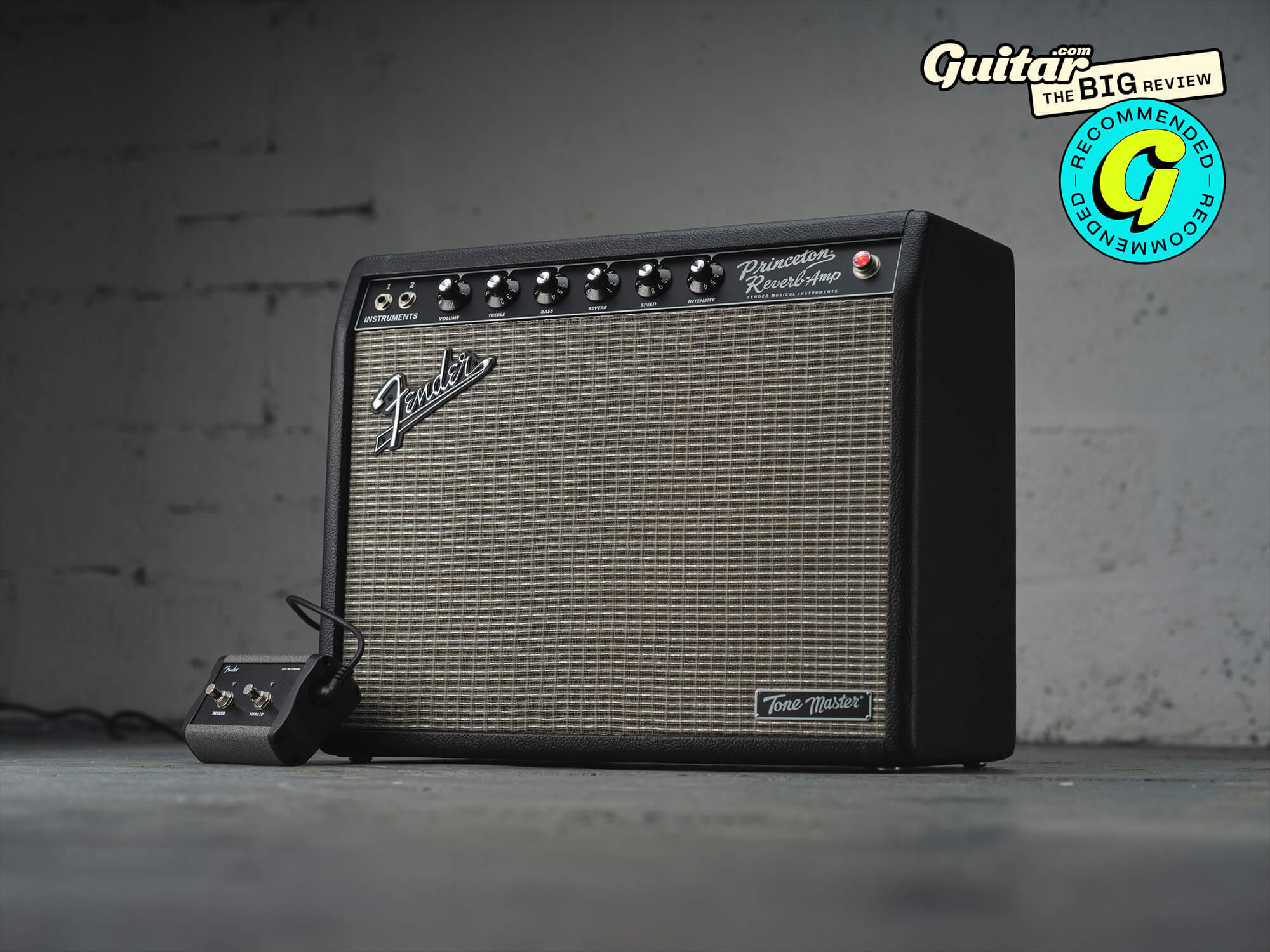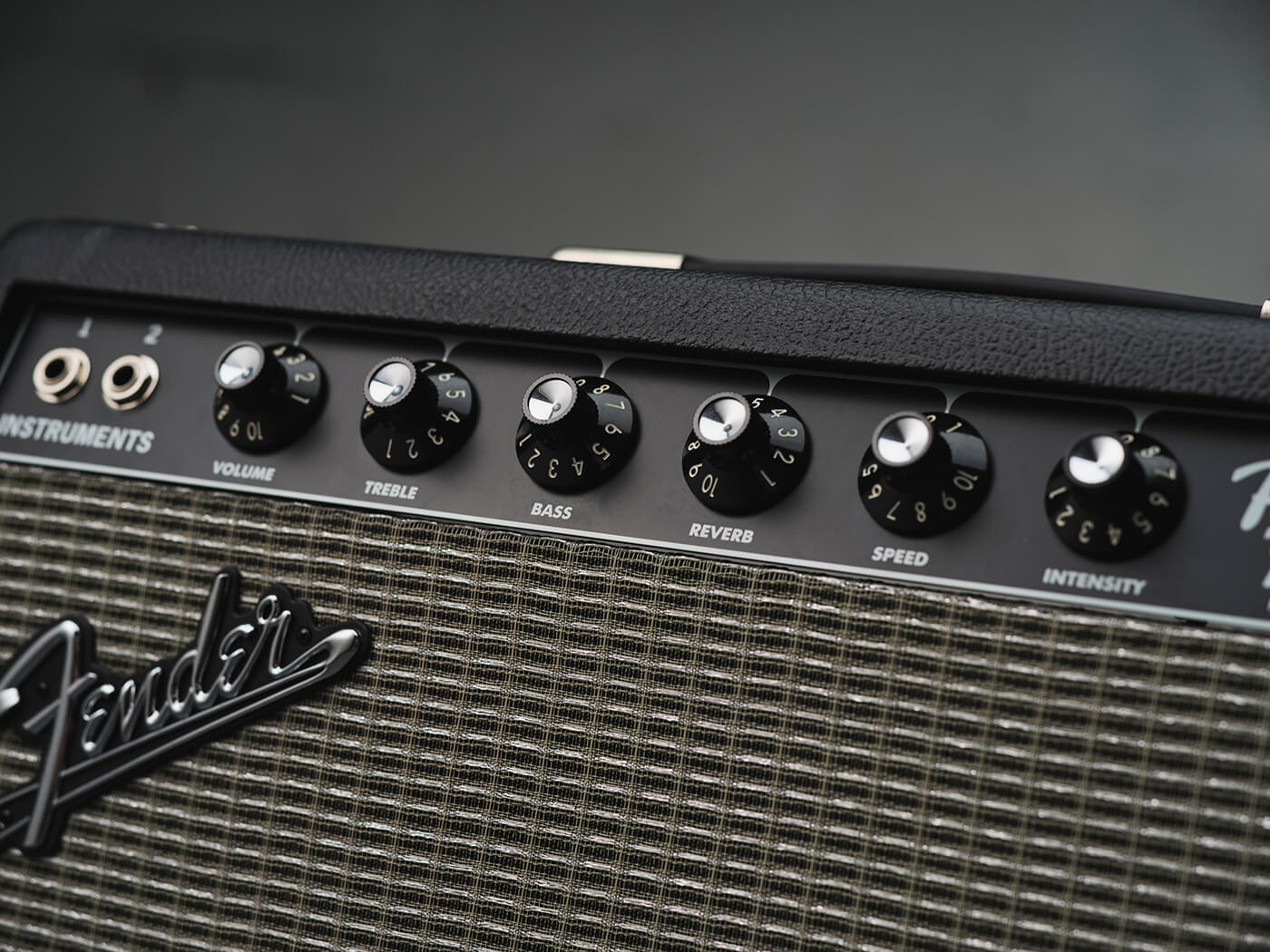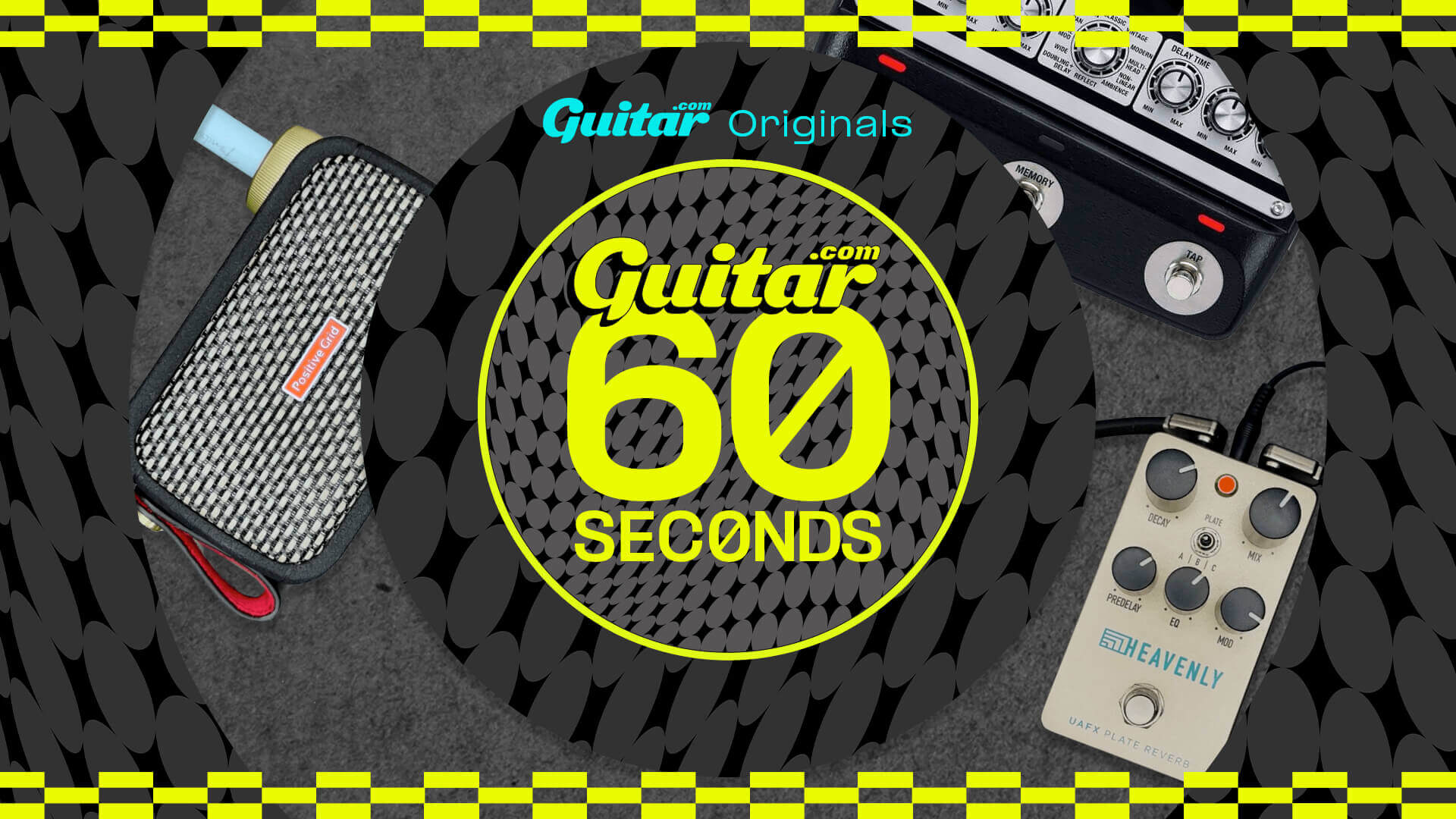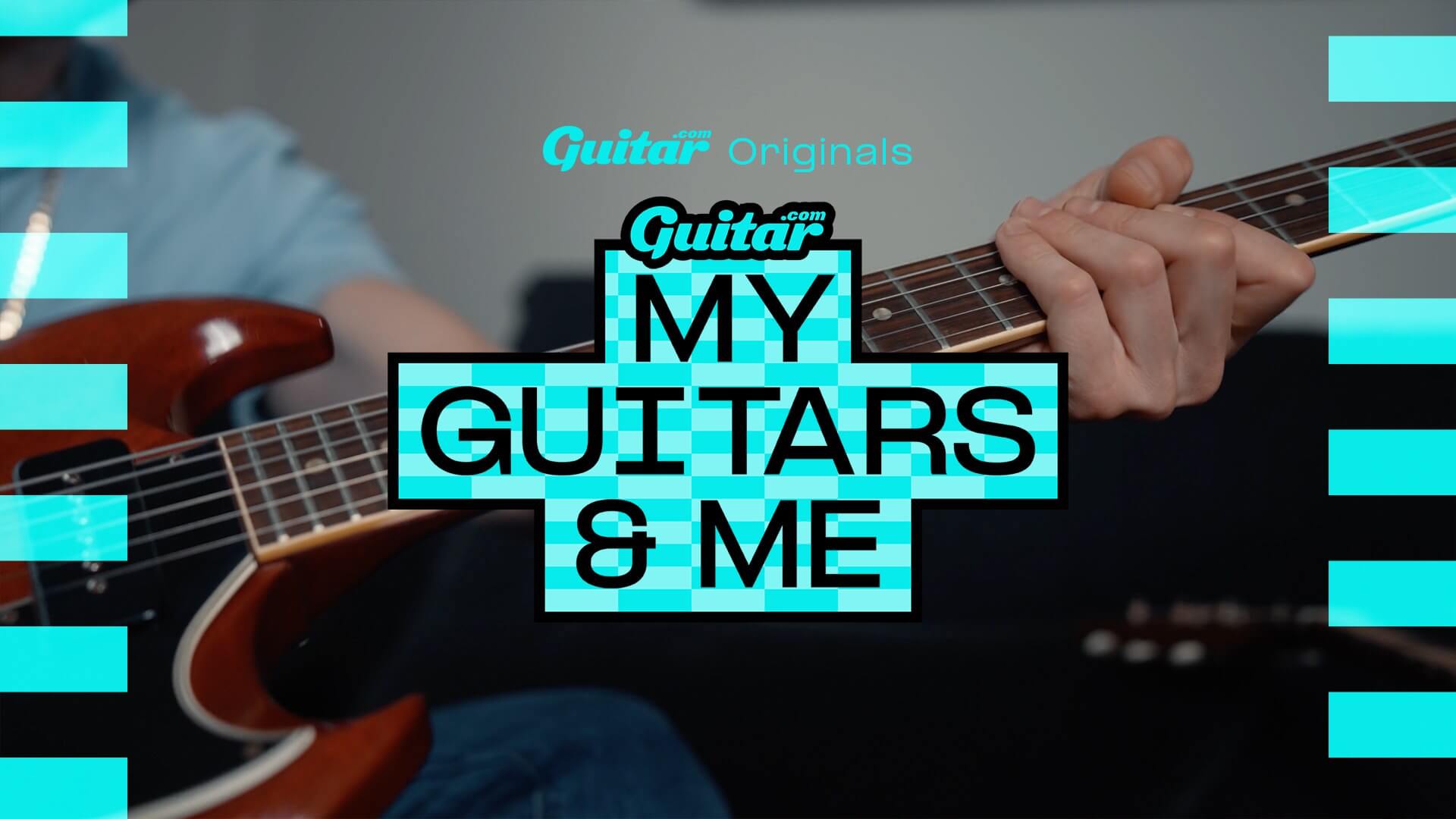Fender Tone Master Princeton Reverb – the ultimate amp for small homes and stages?
In its smallest form factor yet, can Fender’s high-end but stripped-back approach to modelling become an even more compelling package?

Review Overview
Our rating
9
Our verdict
The first thing that’ll throw you off is the weight of the thing. If you’ve been around the guitar block a few times you’ll be accustomed to the not insubstantial heft of a small Fender combo when you hoist it up by that single carry handle. The latest entry in Fender high-end digital modelling range, the Tone Master Princeton Reverb, displaces very slightly more than half the weight of its valve-powered sibling – half!
We’re including that piece of information up top not just because it’s extremely impressive – it’s also a health warning. If you unsuspectingly hoist the Tone Master Princeton out the back of a car with the exertion you’d normally devote to a valve-powered 1×12, you might do yourself a mischief – be warned.
Be intrigued, however, if you are indeed the sort of person who finds themselves lugging small valve combos in and out of cars and up rickety steep stairways to play small gigs and jam sessions – this might very well be the most important amp review you ever read.

You probably know the Tone Master pitch by now, but for those who are new to the concept, it can be summed up thusly: high-quality modelling amps for people who hate modelling amps. So you won’t find any menus on a Tone Master, no companion amp or multi-voice rotary switch. Each TM amp – which in addition to the new Princeton also features Twin Reverb, Deluxe Reverb and Super Reverb models – is designed to emulate a single classic Fender amp circuit in every way possible, and devotes an entire high-end quad-core DSP chip to the task. The result is an amp that, certainly in our previous tests, offers a nigh-on indistinguishable tone and feel experience to the real thing, but with some massively helpful modern quality of life advantages.
For starters, as mentioned, without all that heavy engineering that valve amps require the Tone Master amps are dramatically lighter, but that’s not all. The back of the amp features a six-way power-scaling option which drops the output of the amp down from the full-throated bark of the original (12 watts in the Princeton’s case) all the way down to a positively bedroom-friendly 0.3 watts. You also get a balanced XLR output for going direct at gigs or on recordings, with a pair of built-in switchable cabinet sim options, ground lift and a level control.
It all adds up to a package that flies in the face of a lot of received wisdom about what digital amps are really for in the modern guitar sphere, and in this smallest package yet, it’s arguably never been a more accessible and compelling option for guitarists who mainly play at home but also want something that can shout a bit in a gig environment. Let’s flip that standby switch and get stuck in.

In Use
And yes, there is a standby switch, despite this being a digital amp – a slightly silly affectation perhaps, as there’s no need to worry about protecting your fragile amp innards here, but as the TM’s digital bits take a few seconds to boot up, we’re happy to leave it on mute until the classic jewel light flashes from blue to orange before flipping it to classic red. And if it wasn’t for that unobtrusive Tone Master badge on the front grille, from the front you’d never really know that you weren’t using the real thing – another tick for those who find the thought of standing in front of something non-classic offputting.
The other thing that’ll throw you off is the noise – or indeed the lack thereof. Even with the full-bore 12-watt mode engaged there’s zero hiss or background hum, or indeed noise of any kind, until you want there to be of course. The black-panel Princeton circuit is of course one of the three iconic 60s Fender amp designs, alongside the Deluxe Reverb and the Twin, and so we know what we’re expecting to hear here – it’s turned up on enough records over the ensuing decades. And an initial strum of a Jazzmaster produces all the hits we’ve been expecting courtesy of that Jensen C10R 10-inch speaker – the highs are sweet and sparkling, the mids are pleasantly scooped and the bass is round and punchy (dare we say it, perhaps a little punchier than the real thing?).

Thanks to its smaller size you expect a little more compression with a Princeton and this becomes more evident when swapping to the humbuckers of a Les Paul – the chime is still there but it’s a little boxier and more direct. What you should also be aware of is that 12 watts, even 12 digital watts, is plenty loud enough that you might not want to trouble the higher ends of the volume knob outside of gig environments unless you have very considerate neighbours. The Princeton might have been known more as a studio than a gigging amp in the 60s, but in this era of noise-limiters and good PA systems, it’s a very valid option for smaller venues.
The advantage of the Tone Master, however, is that you don’t have to stick with 12 watts if you don’t want to – with six different levels of reduced output power available with the twist of the rotary switch on the back panel, you can precisely tailor how much headroom you need versus how much sweet compressed amp drive you want to dial in. At the lowest 0.3 watts level you can get the amp breaking up at a level that’s almost conversation-level.

Fender will probably be cross that we’ve got this far in the review without mentioning the onboard effects – especially given that three of TM’s four processing cores are devoted to creating them. Don’t panic though, they haven’t tried to squeeze a multi-effects into the back of a Princeton, the only effects you’ll find here are the ones that you’d get on an old-fashioned version – namely reverb and tremolo. Both of these are footswitchable and the reverb in particular is a stunning feat of digital engineering – a wonderfully organic and detailed effect that you can get lost in just as easily as you would the real thing. No wonder it needs the full force of two whole processing cores to emulate. The tremolo will do everything from woozy pulses to a fast stutter, though you might notice a drop in intensity as the speed increases – that’s actually doing a very good job of emulating the original circuit, but if you’re used to a more intense tremolo in digital or pedal form, be aware this is not a bug, it’s a feature.
Which is all to say that, in every way that matters, the Princeton Reverb continues the Tone Master tradition of doing a masterful job of emulating the combination of every valve, resistor and solder joint of the real thing with a level of user-friendliness that requires absolutely zero consultation of the manual or indeed anything else before you plug in.

It’s a hugely compelling package, though you would hope so for its price tag – it is, basically two thirds the price of a valve-powered Princeton, with the difference being that you know that any experienced tech can fix pretty much anything that goes wrong with it and you’ll still be able to enjoy it for as long as we still have electricity running through the mains.
But when you’re talking about dropping valve amp money on a modelling amp, that issue of longevity is all the more thorny. What exactly happens if five or ten years down the line, your Tone Master suffers some sort of hardware failure? Your local amp guy isn’t going to be much use there, and in a world where we should be increasingly conscious of the environmental impact of our waste, it’s not a nice thought to think of all this heading to a landfill somewhere because it was too fiddly or complex to repair. We hope that bigger companies like Fender are starting to think about this sort of thing more as the worlds of consumer tech and guitar become ever more intertwined.
The other issue often raised against the Tone Master is the question of what exactly you’re getting for your money – there are plenty of modelling amps from other brands (and from Fender itself) that offer an awful lot more sounds for half the price.

But that is very much the point here – if you want loads of different onboard sounds, those amps exist and will continue to exist; fill your boots and enjoy. What the Tone Master concept offers is clarity of purpose and quality of tone. Most of us will reach a point in our playing lives where we know what we like – we don’t need endless options because we have a sound, and we just want the best possible version of it at the end of our signal chains.
For those people whose chosen tone is a black-panel Princeton, the Tone Master is quite simply that – a no-expense-spared digital recreation that offers a remarkable level of fidelity and similarity to the real thing, with all the quality of life benefits that you get through digital emulation. A modelling amp for grown-ups? You said it.
Key features
- PRICE: $899/£819 street
- TYPE: Single-channel modelling amp, made in China
- POWER RATING: 50w RMS into 8 ohms (simulating 12W valve power) – scalable down to 0.3w
- CONTROL PANEL: High and low gain inputs, volume, treble, bass, reverb level, vibrato (tremolo) speed and intensity
- REAR PANEL: Power switch, mute switch, power scaling rotary, balanced line out level, cab sim switch, ground lift switch, XLR out, footswitch out
- FOOTSWITCH: Two-button footswitch (supplied) toggles reverb and vibrato (tremolo)
- CABINET: Pine
- LOUDSPEAKER: 1×10” Jensen C10R
- DIMENSIONS: 505 (w) x 241 (d) x 406mm (h)
- WEIGHT: 8.5kg/20lbs
- CONTACT: Fender
Like this? Try these
- Fender ’65 Princeton Reverb (£1,489)
- Blackstar Silverline Special (£569)
- Fender Mustang GTX 100 (£499)



